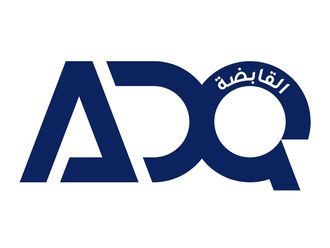Dubai
The Dubai Financial Market General Index (DFMGI) dropped by 38.06 or 1.12 per cent last week to close at 3,355.40. There were 22 advancing issues and 15 declining, while volume grew to a seven-week high.
Last week’s drop put the index at a new closing weekly low for the seven-week downtrend and at a six-month low. A bearish trend continuation signal was therefore triggered. The short-term pattern that has now developed is of a descending trend channel, with the week ending at the trend line at the bottom of the channel, which is also the low for the week. The channel is best viewed on the daily chart. If the channel continues to evolve then we might see some support off of last week’s low. However, there are no signs yet that this may occur.
Just below last week’s low is an uptrend line, which is where the DFMGI may next find support if last week’s low is broken to the downside. The line is now around 3,332.80. There is some significance to the line in that it represents support of a large symmetrical triangle consolidation pattern that has been developing over the past 10 months. Further down from there is a potential support zone from around 3,287 to 3,264. If the 3,264 is broken to the downside then a bearish breakout of the symmetrical triangle is confirmed.
Instead, if a bounce does occur off last week’s low then a rally back up to the top of the small channel, which can be marked by a downtrend line, is where resistance might be seen. That price area would currently be around approximately 3,436. Nevertheless, since the line is declining the actual price will vary depending on when the line is reached.
If instead of finding resistance the DFMGI rallies above the two-day high of 3,454, and upside breakout of the descending channel may be occurring. In that case, next watch for a rally above 3,476.27 for the next sign of strength.
Abu Dhabi
The Abu Dhabi Securities Exchange General Index (ADI) was up 62.29 or 1.46 per cent last week to end at 4,339.22. Market breadth leant on the bullish side with 21 advancing issues, while 16 declined. Volume reached a five-week high.
Before last week the ADI had fallen for seven weeks in a row, ever since hitting a swing high of 4,431.65 in mid-October. Last week the index not only rallied to a four-week high but it also closed the week at a five-week high. This is bullish behaviour that increases the odds for further strength in the short-term. Regardless, there’s no way to tell ahead of time whether a rally is going to be just another temporary bounce within a larger uptrend, or if it has the potential to keep going higher eventually. The more likely scenario so far is that a bounce will eventually be stopped as resistance is seen, and the index will turn back down at that point.
Last week’s high was 4,386.90, right around the lower resistance zone of a large multi-month consolidation pattern. If the index continues higher, above last week’s high, it will again hit potential resistance of the consolidation phase with the next price area to watch being around 4,439. Thereafter, watch 4,481, followed by 4,531.65. The high price is the most recent swing high from eight weeks ago.
On the downside, the recent swing low of 4,244.50 from two weeks ago is key support.
Stocks to watch
Shuaa Capital is starting to look like it wants to breakout of a 11-week bottoming pattern. Last week the stock was up 12 per cent to close at 1.21. That’s the highest weekly close in fourteen weeks and it occurred on high volume. Volume last week hit a 21-week high. Now we need to see additional signs of strength to provide further confidence that a breakout of the bottom has occurred, and that price can start to trend higher.
The recent swing low of 1.03 looks to have completed an eight-month retracement off the peak of 2.02 that was hit in March. At the low Shuaa had fallen 49.01 per cent below the March high. That peak saw the end of a fourteen-month 562.3 per cent rally.
If the retracement off the March high is done then Shuaa has the potential to eventually rally to above 2.02. A daily close above last week’s high of 1.24 will give a confirming signal for further strength.
Regardless, the minimum target is first derived from Fibonacci ratio analysis and it comes in at 1.408. That price target is then followed by the 61.8 per cent Fibonacci price area of 1.642.
Support of significance is around the two-week low of 1.08, with a drop below that price signalling a likely failure of last week’s breakout potential.
Weakness can be used by investors as an opportunity to accumulate shares at lower prices, and it likely will be used as such given that the bullish potential of the pattern now developing is likely being noticed by many market participants.
Along with strength in price should also come an increase in volume. Increasing volume as price rises indicates that the price move likely has some potential to keep going.
Bruce Powers, CMT, is a technical analyst and global market strategist.











